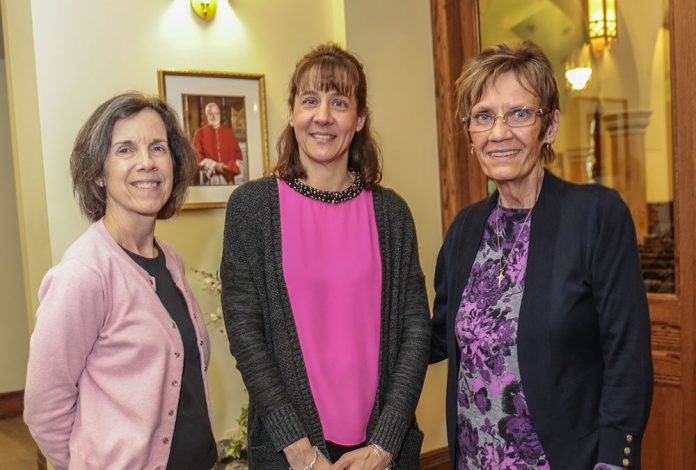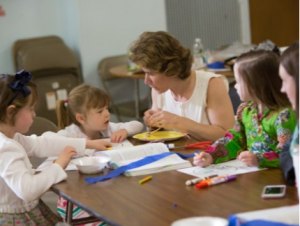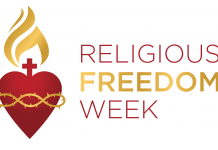
Notes From the Session Panelists
Thomas W. Burnford & Margaret Matijasevic
The 2017 Convocation of Catholic Leaders on July 1-4 in Orlando was a historic gathering of U.S. cardinals, bishops, priests, religious, and lay leaders. At task was discussion of how to apply Pope Francis’ Joy of the Gospel in America. Catechist magazine invited us, as panelists from the break-out session “The State of Catholic Education and Catechesis in the United States,” to share some of our session’s discussion from July 2.
About 400 people gathered for this panel discussion. Facts and figures, successes and challenges, church dynamics and national trends, needs and opportunities were shared by panelists from various areas of Catholic education. As might be expected, there were questions from attendees that accentuated the everyday complexity of passing on the gift of faith. Despite the challenges expressed, it was inspiring to have such a large room filled with committed Catholics who wanted to wrestle with how to put Pope Francis’ call for a “missionary option” into practice in their ministries.
The Joy of the Gospel (Evangelii Gaudium, EG) bluntly challenges the comfortableness of church business as usual. While aware of the divisions between religious education and Catholic schools, those present realized that we can no longer only look inward, focusing solely on preserving our beloved structures and programs. The Spirit is calling us to shift our gaze outward, affirming that the centrality of all we do as educators and catechists should be equipping disciples for the world — disciples with a posture of mercy and compassion, sent out to both encounter and accompany Christ in our neighbor. This is the call of our Baptism.
Important Questions Raised
The best part of this session were the questions raised by the participants. Here is a sampling of some of the questions that you may wish to consider in your own setting:
■ Given the low numbers of millennials sending their children to parish religious
ed or Catholic schools, what alternative models of catechesis have you seen to be effective? And how might these models reflect our call to community and the priority of faith formation in the Christian life?
■ How can Catholic schools better serve our immigrant and low-income Catholic families?
■ What about Catholic homeschooling? How is this accounted for with respect to the state of Catholic education?
■ What best practices help transform our K-12 schools into places that are schools of true discipleship?
■ How can parish religious ed programs and parish schools work together in mission, rather than separately?
■ What does it look like to evangelize our non-Catholic kids in our Catholic schools?
■ How can we touch the hearts of the parents — the primary educators of our children?
The parish (and likewise the Catholic school and the religious education program) “is not an outdated institution; precisely because it possesses great flexibility, it can assume quite different contours depending on the openness and missionary creativity of the Pastor and the community” (EG, 28). This is where the opportunity lies to work together, to wrestle with the above questions, and to take a fresh look at the ministries of the Church with “a missionary impulse capable of transforming everything, so that the Church’s customs, ways of doing things, times and schedules, language and structures, can be suitably channeled for the evangelization of today’s world rather than for her self-preservation” (EG, 27).

Worthy of Reflection
■ 85% in catechetical leadership are over the age of 40, while only 15% are under 40 years of age.
■ There are almost 2 million students in 6,400 Catholic elementary and high schools; there are 3.1 million students in parish elementary- and high-school religious education programs.
■ Increasing potential for diverse leadership is a forecasted outcome of the V Encuentro process (see VEncuentro.org), which will contribute to adjusting the current catechetical leadership statistics that show 80% female and 88% white.
■ In some parts of the country Catholic school enrollment is growing, but overall it has been declining; much work is underway to promote the value of Catholic school education and its importance in the broader evangelizing and catechetical mission of the Church.
■ A reduction in resources in diocesan and parish catechetical programs with increasing responsibilities on leadership is occurring and requires more creativity, time, and training to meet the needs of today’s disciples.
■ Vocational discernment is required of all of us. What is the catechetical story that the church tells to increase vocations to catechetical and school leadership?
■ “A budget is a theological statement” (Cardinal Tobin). Rethinking the allocation of diocesan and parish resources toward investing in lay leadership in a comprehensive and thoughtful way, including spiritual discernment and health, just salaries, and educational support, could enhance the fulfillment of the call to form missionary disciples.
What is clear: this Convocation brought people together around the challenge of Evangelii Gaudium. Let’s pray, study, work, discuss, and implement this vision together, as one sacramental people in relationship with the living God, working to spread the Good News of Jesus Christ.
THOMAS W. BURNFORD, DMin, is the president and CEO of the National Catholic Educational Association. Visit NCEA.org.
MARGARET MATIJASEVIC, MA, is the executive director of the National Conference for Catechetical Leadership. See NCCL.org.
PHOTO: GEORGE MARTELL
This article was originally published in Catechist magazine, October 2017.




